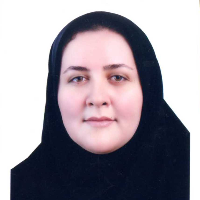The Assessment of Environmental Risks for Sustainable Development in National Parks and Protected Areas (Case Study: Dez National Park and Protected Area)
Protected areas and national parks play an essential role in protecting natural ecosystems and are an effective tool for the conservation of endangered species and the threats posed by human activities. These areas can help protect biodiversity by preserving environmental processes against Turmoil (Orozco et al., 2016). Currently, protected areas are considered as an important component in landscape (Echeverria et al., 2008) and should be evaluated periodically because they are protected for their natural values and can provide many benefits to communities (Pfaff et al., 2009). The risks monitoring in protected areas and national parks is very important in order to understand how they are, their impact on nature, the processes of reconstruction and restoration and to protect them in the long run. Assessing the risk in the ecological resources and ecological conditions of such areas helps managers make the necessary decisions (Jones et al., 2009; Wang et al., 2009). Multi-criteria decision-making techniques are used today for risk assessment in many studies. A review of the history of using multi-criteria decision making methods in risk assessment shows that these methods have been used alone or with other methods for risk assessment in different cases (Makvandi et al., 2013). The most popular multi-criteria decision-making (MCDM) technique is the TOPSIS method (see Hsu et al., 2010; Manouchehri & Shia, 2013). The general objective of the present study is the application of TOPSIS multi-criteria decision-making method for assessing environmental risks of Dez National Park and protected area. In this regard, the most important risks of Dez National Park and protected area are studied in terms of severity, probability and sensitivity of the receiving environment.
Dez Area with an area of 22013 hectares (total national parks and protected areas) in geographical position 22 and 48 to 46 and 48 degrees east longitude and 34, 31 to 12 and 32 degrees north latitude with north-south direction in narrow strip on both sides of the Dez River extends (Khuzestan Department of Environment, 2016(.
In In this study, the existing risks in the area through field visits, interviews with environmental experts and environmentalists present in the area, as well as existing reports and with use of Delphi technique in two parts of natural and environmental disasters were identified.In this research, the assessment and ranking of environmental risks of Dez Protected Area and National Park using TOPSIS method were based on three indicators of intensity of effect, probability of occurrence and sensitivity of the receiving environment. After determining the priority of the regional risks, for, the components of the number of categories and length of the category were determined based on relations 1 and 2 (see Makvandi et al., 2013) in order to determine their degree of risk.
1 + 3.3 log (n) = rank number n= total number of risks (1)
Category / smallest amount of risk - the largest amount of risk = Length of the category (2)
According to the field surveys, similar reports and experts' views, 33 initial risks were classified into two groups of natural and environmental disasters in this study. Then, using Delphi methodology and scoring the studied factors, 26 risk factors including 5 natural risks, 2 physico-chemical risks, 3 biological risks, 15 socio-economic risks and 3 cultural risks were rated as high as 3 and were accepted. The results showed that the risk of unauthorized hunting with a coefficient of proximity of 0/876811 has the highest risk of the area, while the risk of intentional and unintentional fire with a coefficient of proximity of 0/180761 has the lowest priority. Also, the highest natural risk in the area is drought with a coefficient of proximity of 0/6128228. The risks of Dez Area are affected by five unpredictable, significant, tolerable, modest, and minor categories in which tolerable risks are allocated as the most frequency percentage.
What is considered in sustainable development is the set of conditions leading to a favorable situation, and this goal is pursued in three areas: biological, cultural and economic. The view of environmental management based on natural resource management expresses that human beings need natural resources and the use of these resources still needs many years to come. Using TOPSIS multi-criteria decision-making technique, the hazards were identified and evaluated in Dez Protected Area and National Park. Due to the precise planning and integrated management with regard to the characteristics of the area, it is possible to preserve this particular ecosystem, as well as its sensitive and unique habitats, plant and animal species, and also to guarantee the survival of the human communities in this area. Although the management of each region would have a unique ecosystem, knowing the experiences of the regions and applying the knowledge and methods of international organizations and academic studies in protected areas would enchance the process of sustainable development along with maximum protection of biodiversity.
Risk assessment , Protected area , National Park , TOPSIS , Dez , Khuzestan
- حق عضویت دریافتی صرف حمایت از نشریات عضو و نگهداری، تکمیل و توسعه مگیران میشود.
- پرداخت حق اشتراک و دانلود مقالات اجازه بازنشر آن در سایر رسانههای چاپی و دیجیتال را به کاربر نمیدهد.



